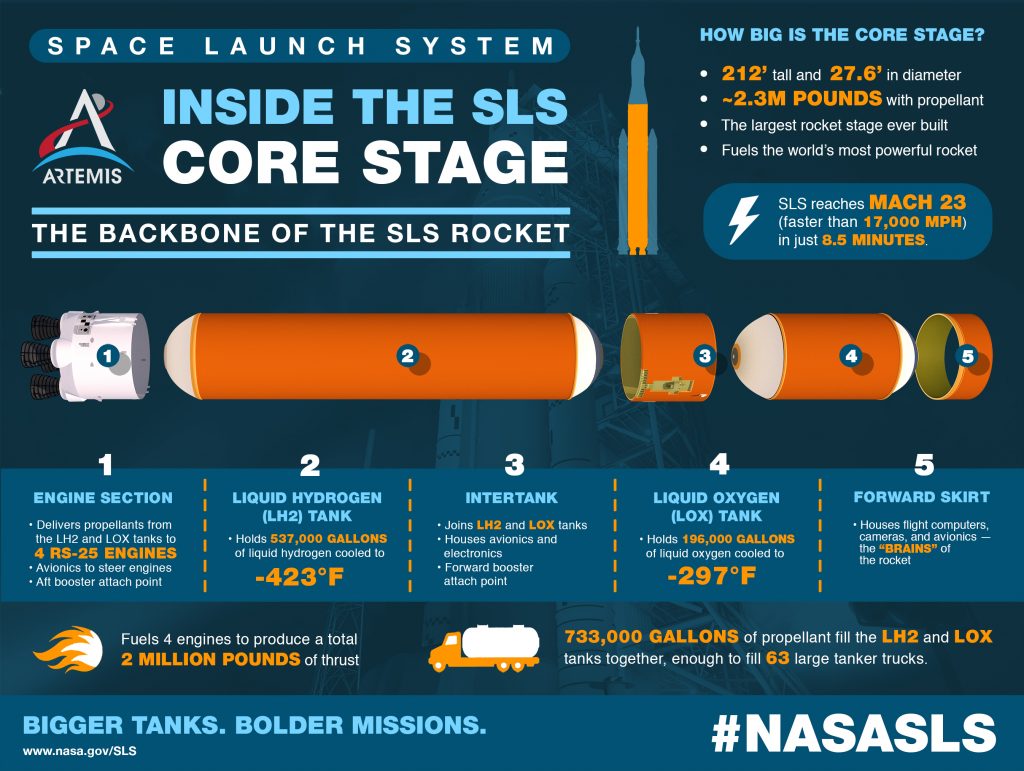For the Green Run hot fire test on Jan. 16, NASA set out to acquire test data to support 23 detailed verification objectives. To satisfy the objectives, hot fire test data is used in combination with analysis and testing that has already been completed. These detailed verification objectives are used to certify the design of the Space Launch System rocket’s core stage.
The preliminary assessment indicates that the data acquired met the goals for a number of the 23 objectives, such as those related to activities prior to engine ignition. The initial assessment also indicates that data acquired partially met the goals for several additional of the 23 objectives related to simultaneous operations of four RS-25 engines.
NASA and its industry partners, Boeing and Aerojet Rocketdyne, are continuing to assess the extensive data from the test. As part of the planned near-term activities, they will complete the final assessment determining which objectives were fully met and which ones were partially met. They also are evaluating the value of acquiring additional test data and a longer run time to augment the existing analyses and data.
Currently, the SLS core stage can still be loaded with propellant and pressurized 20 more times for a total of 22 cycles. Rocket stages like the core stage are designed to be loaded with cryogenic propellant and pressurized a specific number of times. These are called cryogenic loading cycles. Before Green Run testing began, SLS had allocated nine cryogenic cycles for testing at NASA’s Stennis Space Center in Bay St. Louis, Mississippi and has used two of those during the hot fire and wet dress rehearsal, with seven cryogenic cycles remaining for additional testing. For the Artemis I Iaunch, NASA is preserving 13 of the remaining 20 cryogenic loading cycles. These can be used for multiple launch attempts, a wet dress rehearsal on the launch pad, and other activities that require propellant loading and tank pressurization.
One of the critical activities that must happen before either another hot fire test or launch is drying and refurbishment of the engines. That activity is underway. NASA is continuing to inspect the core stage and its RS-25 engines on the B-2 test stand, and initial inspections indicate the hardware is in excellent condition.
Hardware inspection and data assessment will continue and will inform NASA’s decision on whether to conduct a second Green Run test or proceed with shipping the core stage to Kennedy for integration with other SLS hardware in the Vehicle Assembly Building.

For more updates, images and videos, check back at this blog or the Green Run web site: https://www.nasa.gov/artemisprogram/greenrun
NASA conducted a media briefing with several experts who support the Green Run team on Jan. 19, and a replay will be available for 30 days by dialing 888-566-0617.
